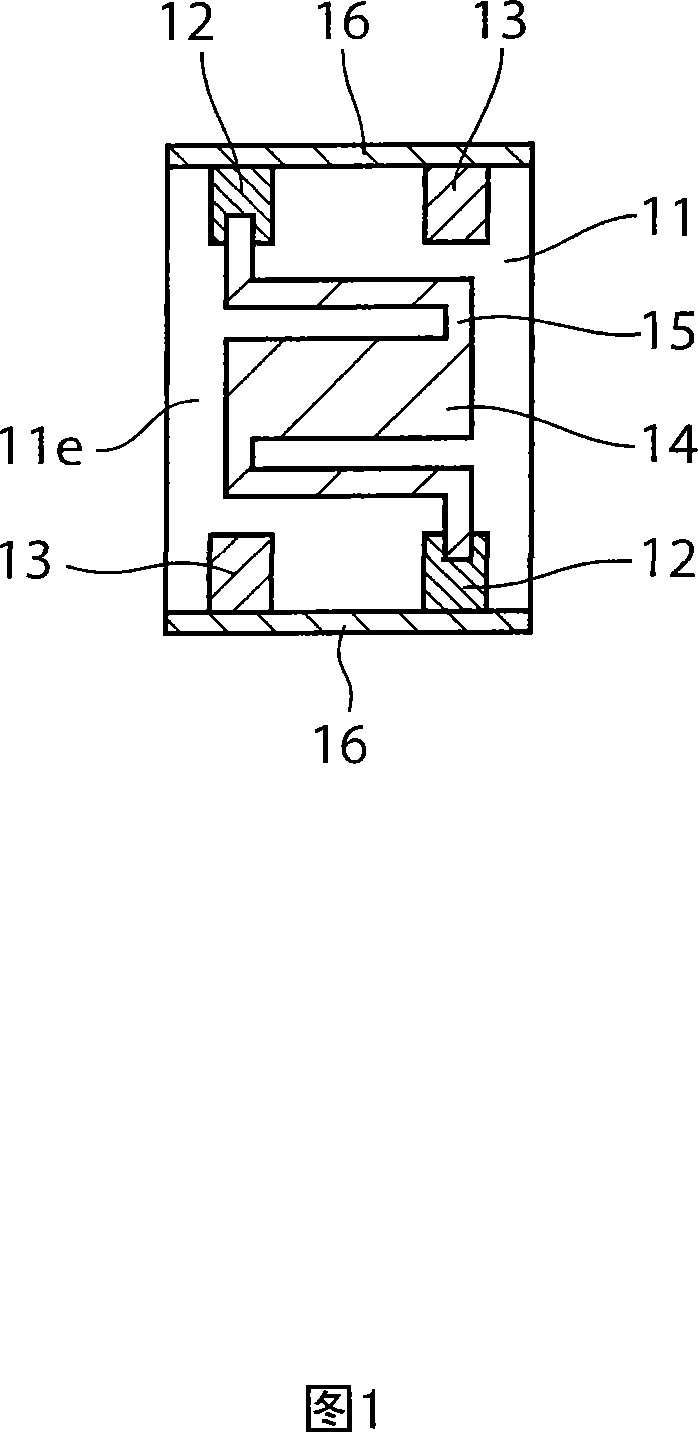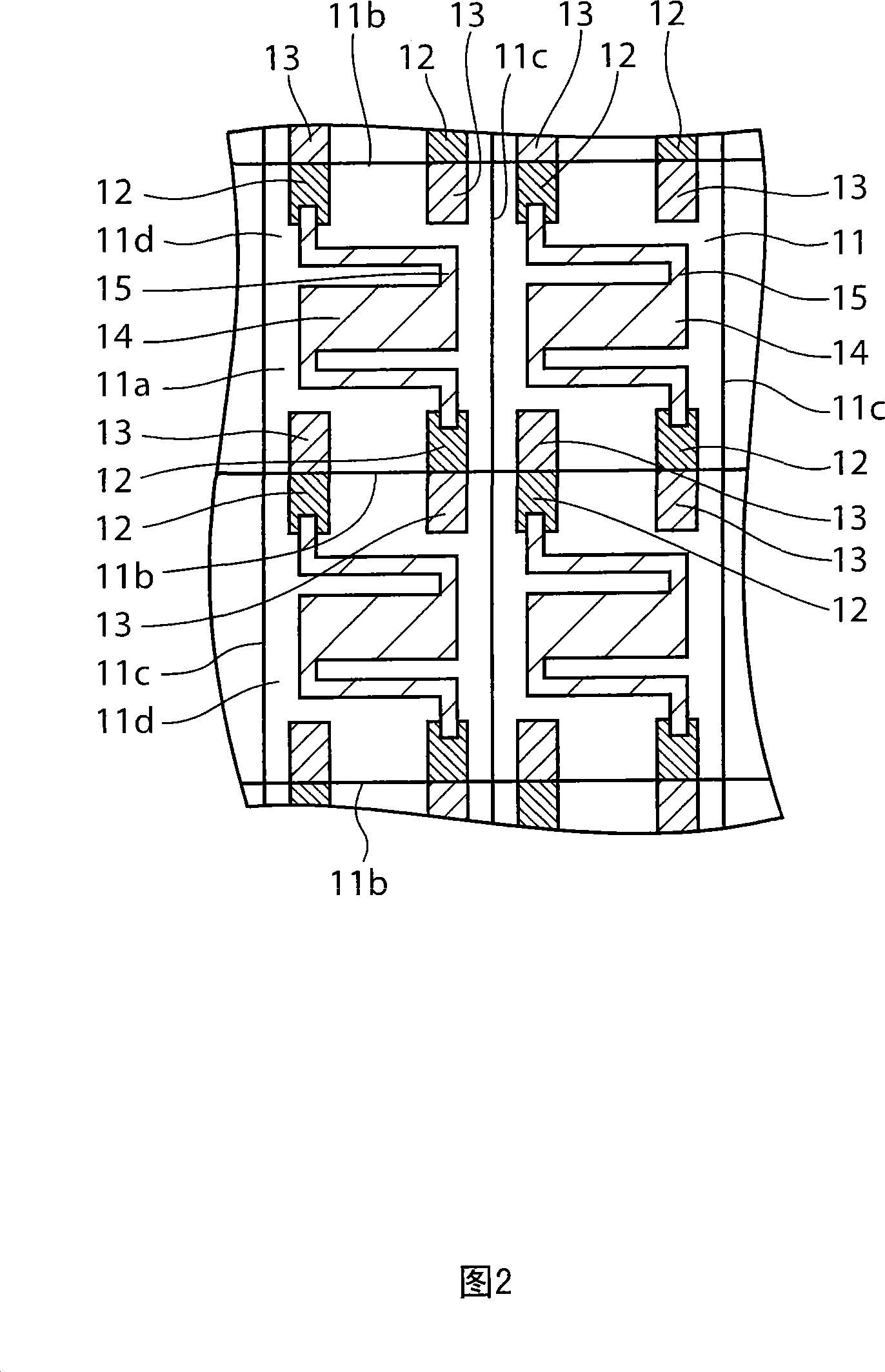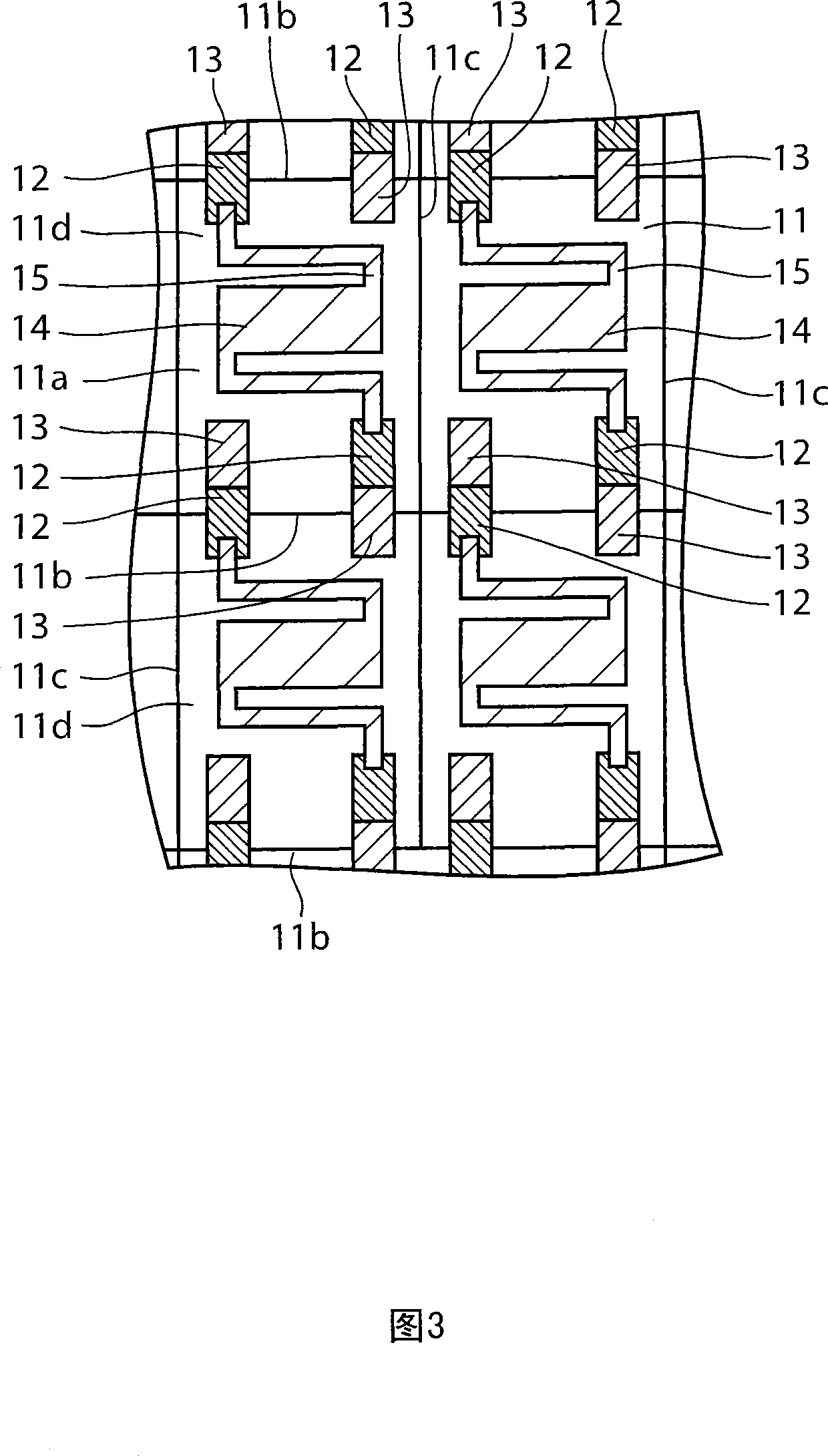Chip resistor and its manufacturing method
A technology for chip resistors and manufacturing methods, applied in the direction of resistors, resistor assemblies, and manufacturing resistor chips, etc., can solve problems such as position deviation, surface electrodes 2 and end surface electrodes 5 cannot be electrically connected, etc.
- Summary
- Abstract
- Description
- Claims
- Application Information
AI Technical Summary
Problems solved by technology
Method used
Image
Examples
no. 1 example
[0034] Hereinafter, a first embodiment of the present invention will be described.
[0035] FIG. 1 is a plan view of a chip resistor of a first embodiment of the present invention.
[0036] In FIG. 1, 11 is a square substrate made of alumina, and the planar shape of the square substrate 11 is a rectangle. 12 is two opposite side portions formed on the surface of the above-mentioned square substrate 11, relative to the direction connecting the two opposite side portions of the square substrate 11, that is, the centerline of the longer direction of the square substrate 11 A pair of surface electrodes located on opposite sides, the pair of surface electrodes 12, is formed by screen printing with electrode paste (Electrode Paste) mainly composed of silver and sintering at 850°C. 13 is two opposite sides on the surface of the above-mentioned square substrate 11, relative to the direction perpendicular to the direction connecting the opposite two sides of the above-mentioned square...
no. 2 example
[0053] Next, a second embodiment of the present invention will be described.
[0054] 7 is a plan view of a chip resistor of a second embodiment of the present invention.
[0055]In FIG. 7, 21 is a square substrate made of alumina, and the planar shape of the square substrate 21 is a rectangle. 22 is two opposite side portions formed on the surface of the above-mentioned square substrate 21, relative to the direction connecting the two opposite side portions of the square substrate 21, that is, the center line in the longer direction of the square substrate 21. A pair of surface electrodes located on the opposite side, the pair of surface electrodes 22, is formed by screen printing with an electrode paste mainly composed of silver, followed by sintering at 850°C. 23 is two opposite sides on the surface of the above-mentioned square substrate 21, relative to the direction connecting the opposite two sides of the above-mentioned square substrate 21, that is, the direction perpe...
no. 3 example
[0074] Next, a third embodiment of the present invention will be described.
[0075] 13 is a plan view of a chip resistor of a third embodiment of the present invention.
[0076] In FIG. 13, 31 is a square substrate made of alumina, and the planar shape of the square substrate 31 is a rectangle. 32 is a pair of surface electrodes formed on two opposite sides of the surface of the above-mentioned square substrate 31 along the extending direction of the two sides, that is, the shorter direction of the square substrate 31, the pair of surface electrodes 32. It is made by screen printing with silver-based electrode paste and sintered at 850°C. 34 is a resistor body formed on the surface of the square substrate 31, spanning between the above-mentioned pair of surface electrodes 32, and electrically connected thereto. Screen printing and sintering at 850°C. The above-mentioned resistor 34 has a meandering portion 35 meandering across between a part of the pair of surface electrodes...
PUM
 Login to View More
Login to View More Abstract
Description
Claims
Application Information
 Login to View More
Login to View More - R&D
- Intellectual Property
- Life Sciences
- Materials
- Tech Scout
- Unparalleled Data Quality
- Higher Quality Content
- 60% Fewer Hallucinations
Browse by: Latest US Patents, China's latest patents, Technical Efficacy Thesaurus, Application Domain, Technology Topic, Popular Technical Reports.
© 2025 PatSnap. All rights reserved.Legal|Privacy policy|Modern Slavery Act Transparency Statement|Sitemap|About US| Contact US: help@patsnap.com



